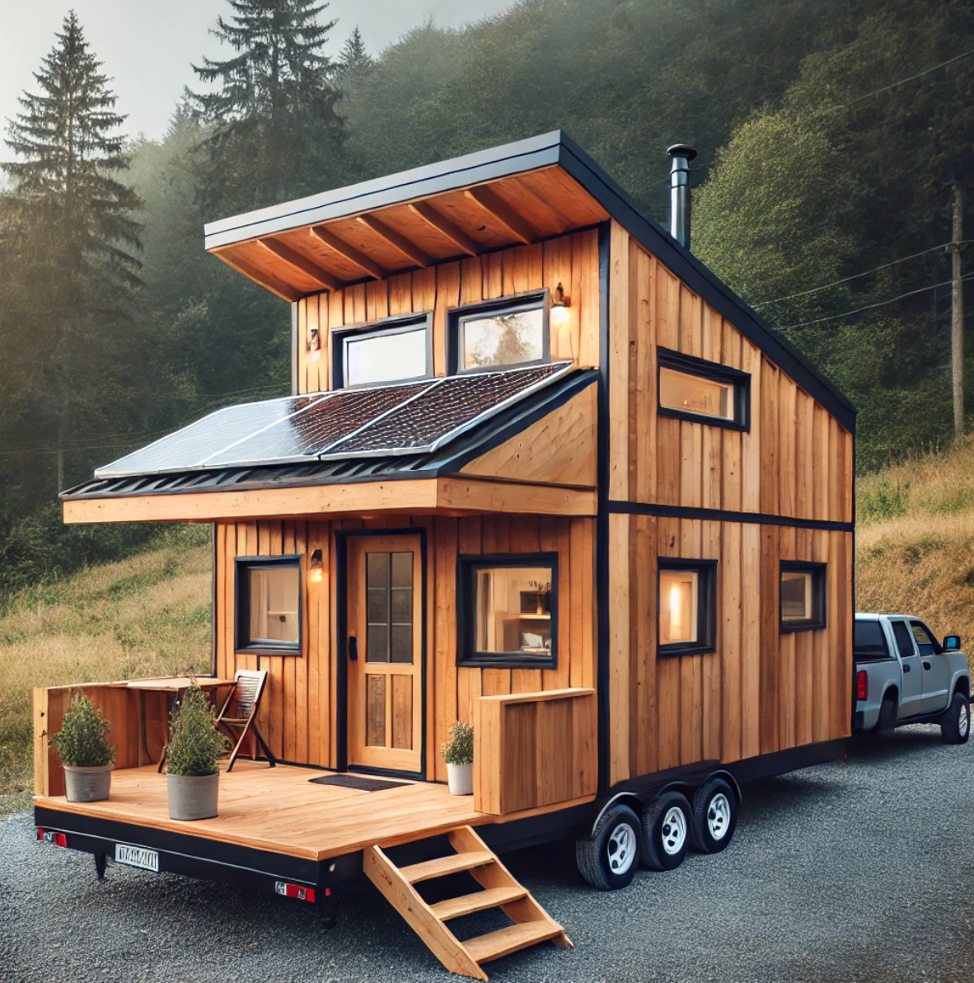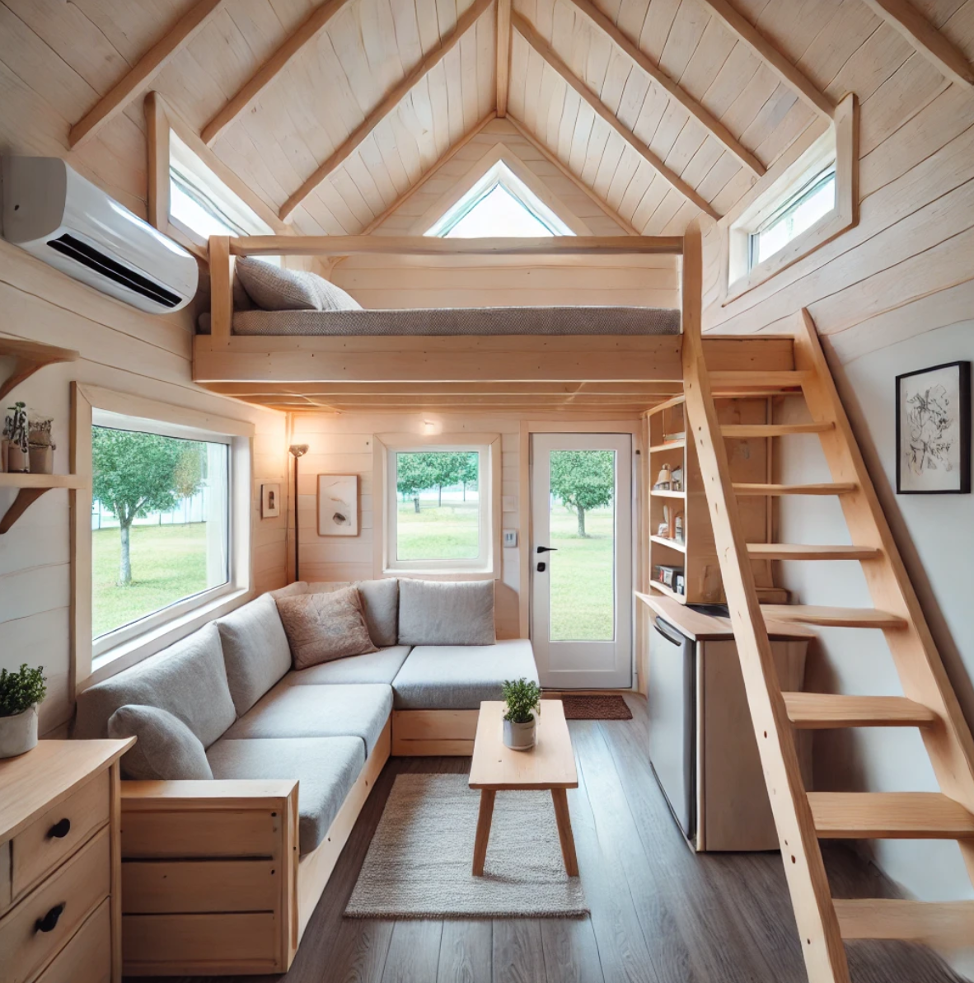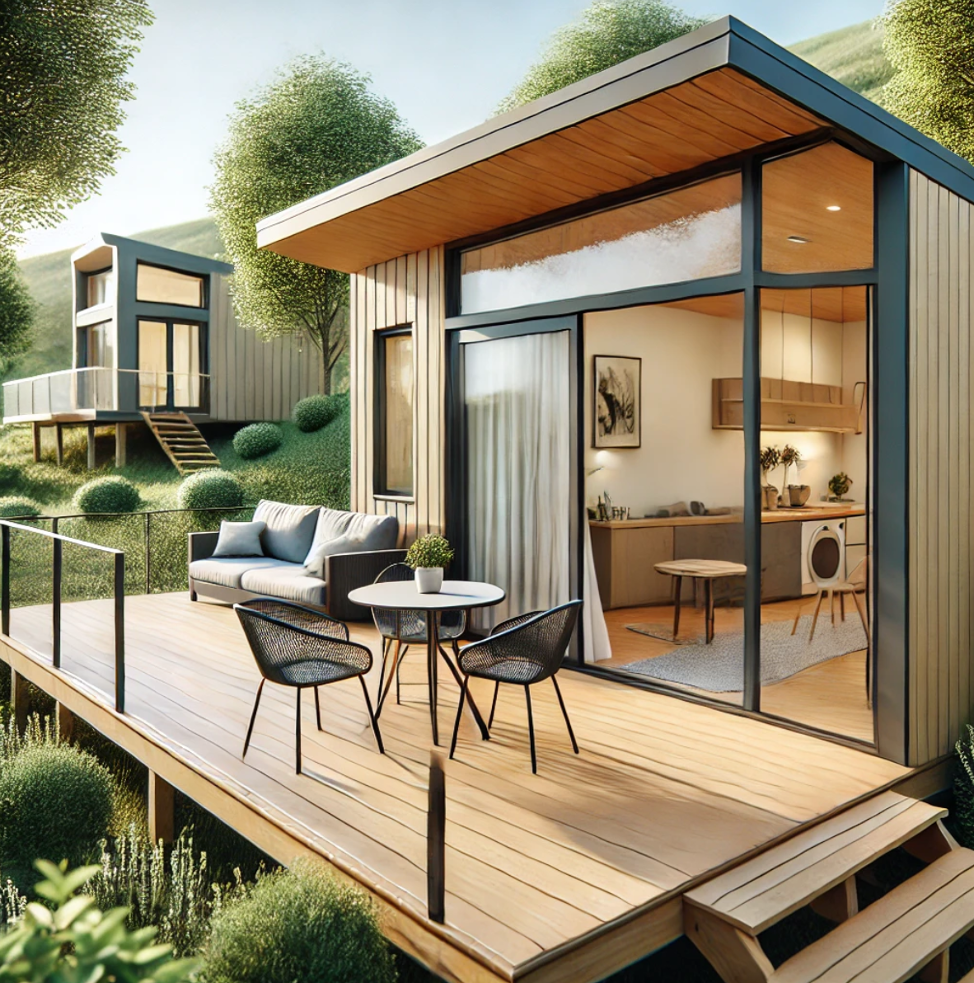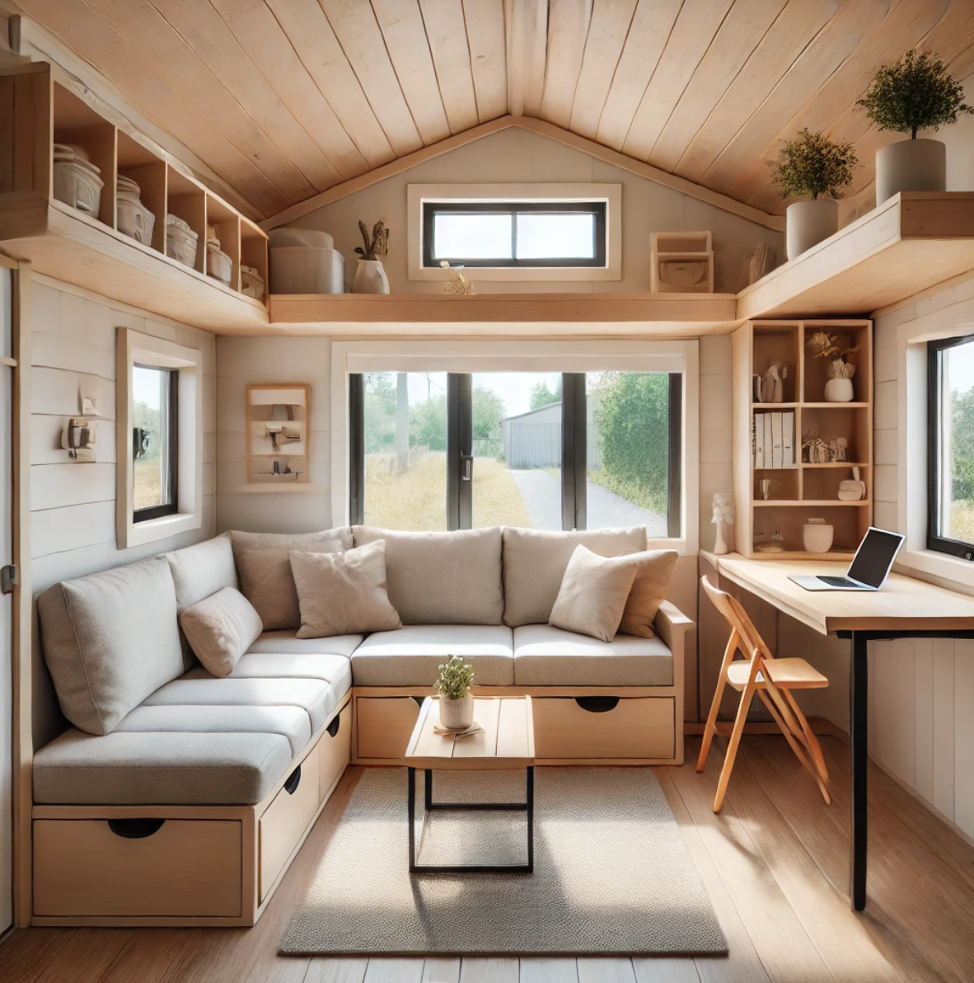As modern living evolves, many people are embracing the idea that bigger isn’t always better. The tiny house movement has gained significant traction, offering an innovative solution to modern challenges such as rising housing costs, environmental concerns, and the desire for a simpler, more intentional lifestyle. Tiny houses—defined as homes typically between 100 and 400 square feet—provide efficient and creative ways to live comfortably in smaller spaces. In this article, we’ll explore the appeal of tiny house living and how these small spaces are revolutionizing home design.
The Growing Appeal of Tiny House Living

The appeal of tiny house living is rooted in several key benefits. First and foremost is affordability. With housing prices on the rise, owning a traditional home has become out of reach for many. Tiny houses, however, are much more affordable to build and maintain, with average prices ranging between $30,000 and $60,000 depending on customization. This reduced cost allows homeowners to live debt-free, something many find liberating.
Another factor is sustainability. Tiny houses require fewer resources to build and maintain. They consume less energy, use fewer materials, and produce a much smaller carbon footprint. Many tiny homes are built using eco-friendly materials and are designed with energy efficiency in mind, incorporating solar panels, composting toilets, and rainwater collection systems. For those committed to reducing their environmental impact, a tiny house offers an attractive option.
Moreover, tiny homes promote a minimalist lifestyle. With limited space, owners must be selective about what they bring into their homes. This intentional approach to living reduces clutter and fosters a simpler, more organized lifestyle. Many people who live in tiny homes report feeling less stressed and more focused on experiences rather than material possessions.
Designing for Efficiency: Smart Use of Space

One of the most impressive aspects of tiny house living is the innovative use of space. Every inch of a tiny house must be thoughtfully designed to maximize functionality without sacrificing comfort. Here are some common design features that make tiny homes work:
- Lofted Sleeping Areas: To save floor space, many tiny homes incorporate sleeping lofts, which utilize the vertical height of the home. These areas are accessed by ladders or small staircases and free up the lower level for living and dining areas.
- Multipurpose Furniture: In a tiny house, furniture often serves multiple purposes. For example, a dining table may also function as a workspace, or a couch may double as a bed. Storage is often built into the furniture to make the most of the available space.
- Creative Storage Solutions: Smart storage is key in tiny house design. From under-floor storage compartments to built-in shelving and hidden cabinets, every available nook is utilized. Sliding doors and pull-out cabinets are common features that conserve space and create a more open environment.
- Outdoor Living Extensions: Tiny house owners often extend their living spaces outdoors. Decks, patios, and covered outdoor areas provide additional space for dining, entertaining, or simply relaxing, without expanding the footprint of the home.
- Compact Kitchens and Bathrooms: Tiny homes often feature efficient kitchens and bathrooms with smaller appliances and fixtures. Compact refrigerators, two-burner stovetops, and space-saving sinks allow for full functionality in a smaller footprint. In bathrooms, features like wet baths—where the shower and toilet share the same space—are common.
Mobility and Flexibility

Many tiny houses are built on trailers, giving homeowners the option to move their home wherever they please. This mobility offers a level of flexibility that traditional homes cannot match. Tiny house dwellers often live in one location for several months or years before relocating, taking their home with them on the road. This nomadic lifestyle is especially appealing to individuals who enjoy travel or want the flexibility to live closer to family, friends, or new work opportunities.
For those who prefer a stationary tiny house, many cities and communities have embraced tiny homes as part of their housing solutions. Some tiny house owners place their homes on permanent foundations, while others take advantage of tiny house communities, which offer a sense of neighborhood and shared resources.
Downsizing Without Sacrificing Comfort

While the square footage may be small, tiny homes are designed to feel spacious and comfortable. High ceilings, large windows, and an open layout make the space feel larger than it is. Many tiny homes are customized to suit the specific needs and preferences of their owners, allowing for luxury features such as high-end finishes, cozy reading nooks, and even small bathtubs.
Homeowners can also choose between different architectural styles, from rustic cabins to sleek modern designs. Tiny houses are built with the same attention to detail as traditional homes, ensuring that comfort, safety, and aesthetics are not compromised despite the smaller size.
Challenges of Tiny House Living
While tiny house living offers many advantages, it’s not without its challenges. Limited space means that there is little room for entertaining large groups of people or storing a significant amount of belongings. Downsizing can be a difficult adjustment for those used to living in larger homes.
Additionally, zoning laws and regulations in some areas make it difficult for tiny house owners to legally park or place their homes. Not all cities are tiny house-friendly, so it’s important for prospective owners to research local ordinances before committing to this lifestyle.
Lastly, climate control can be more challenging in a tiny home. Due to their small size, tiny homes may heat up or cool down more quickly than traditional homes, requiring careful planning for insulation and ventilation.
Embracing a New Lifestyle
Despite these challenges, the tiny house movement continues to grow, attracting people from all walks of life—young professionals, retirees, families, and even entrepreneurs. Tiny house living represents a shift towards simplicity, sustainability, and financial freedom. It encourages people to focus on what truly matters and to live more consciously, whether that means reducing their environmental impact or achieving a greater work-life balance.
For many, tiny house living is about more than just a smaller space—it’s about embracing a new way of life that prioritizes freedom, adventure, and mindfulness. By offering affordable, eco-friendly, and innovative housing solutions, the tiny house movement is reshaping how we think about home and what it means to live comfortably.
Conclusion
Tiny house living is an innovative approach to modern living that challenges the conventional wisdom that bigger is always better. By embracing small, thoughtfully designed spaces, tiny house dwellers enjoy financial freedom, reduced environmental impact, and a simpler lifestyle. As the movement continues to grow, tiny houses are proving that it’s possible to live comfortably, even in the smallest of spaces.

